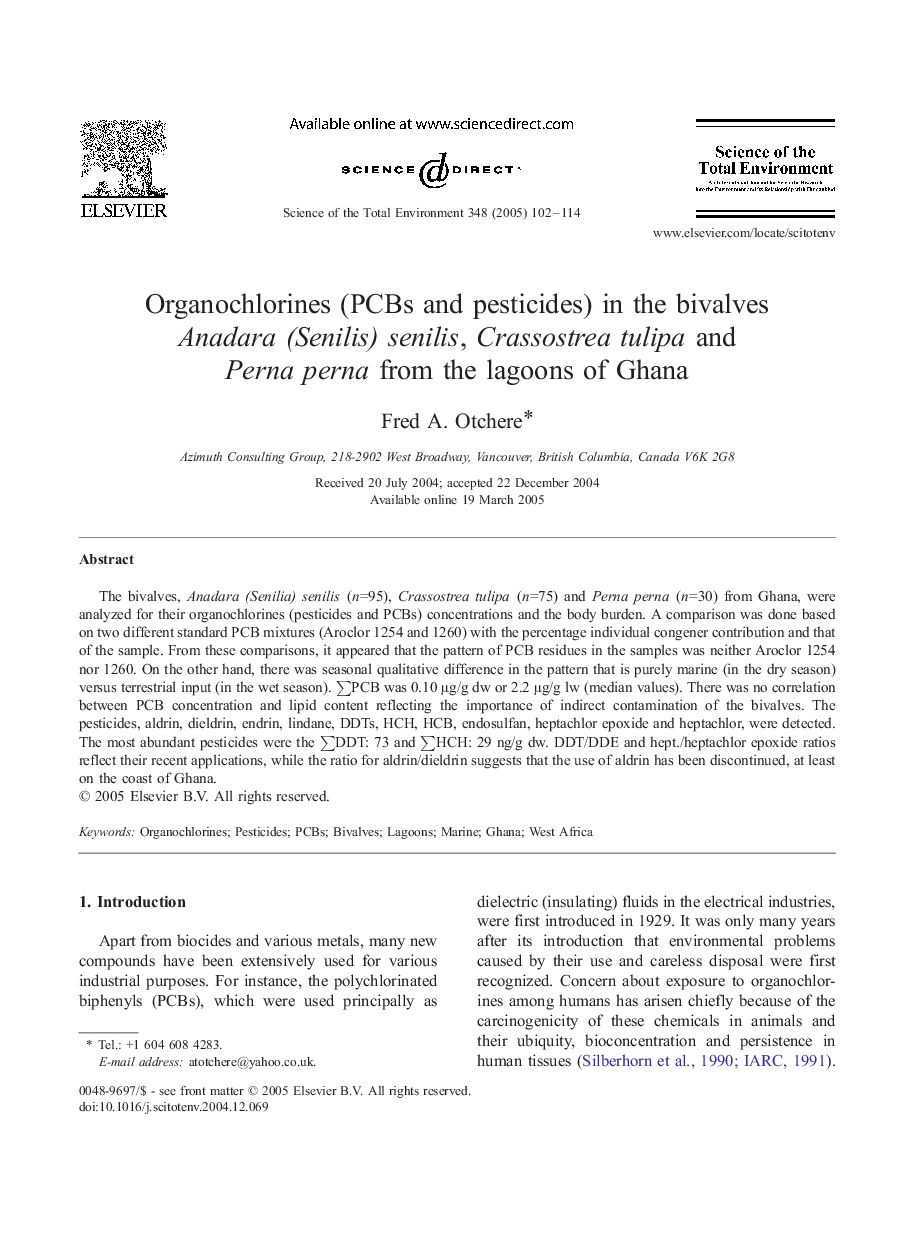| Article ID | Journal | Published Year | Pages | File Type |
|---|---|---|---|---|
| 10110641 | Science of The Total Environment | 2005 | 13 Pages |
Abstract
The bivalves, Anadara (Senilia) senilis (n=95), Crassostrea tulipa (n=75) and Perna perna (n=30) from Ghana, were analyzed for their organochlorines (pesticides and PCBs) concentrations and the body burden. A comparison was done based on two different standard PCB mixtures (Aroclor 1254 and 1260) with the percentage individual congener contribution and that of the sample. From these comparisons, it appeared that the pattern of PCB residues in the samples was neither Aroclor 1254 nor 1260. On the other hand, there was seasonal qualitative difference in the pattern that is purely marine (in the dry season) versus terrestrial input (in the wet season). âPCB was 0.10 μg/g dw or 2.2 μg/g lw (median values). There was no correlation between PCB concentration and lipid content reflecting the importance of indirect contamination of the bivalves. The pesticides, aldrin, dieldrin, endrin, lindane, DDTs, HCH, HCB, endosulfan, heptachlor epoxide and heptachlor, were detected. The most abundant pesticides were the âDDT: 73 and âHCH: 29 ng/g dw. DDT/DDE and hept./heptachlor epoxide ratios reflect their recent applications, while the ratio for aldrin/dieldrin suggests that the use of aldrin has been discontinued, at least on the coast of Ghana.
Related Topics
Life Sciences
Environmental Science
Environmental Chemistry
Authors
Fred A. Otchere,
